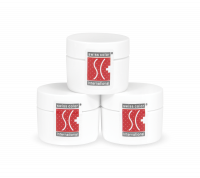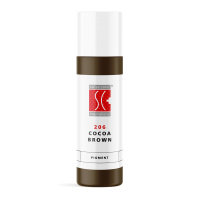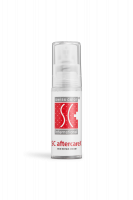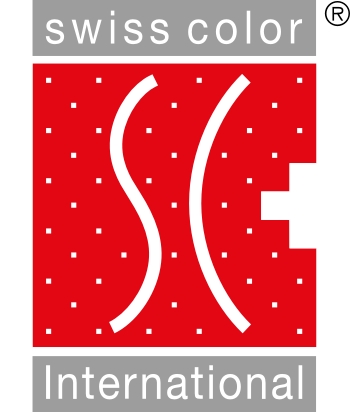TOP Microblading products
Microblading is a semi-permanent, manual pigmentation technique. It is used in professional studios primarily for shaping eyebrows using the hair technique, but also for shading effects. Colors are applied to the skin using a series of fine needles. These special needles are called Micro Blades, which are inserted into the Microblading pen. The pigments injected are stored in the skin through the immediate regeneration process. In addition, a pigment mask applied directly after the treatment, for example to the eyebrows, ensures that the color stays in the skin even more permanently.
In this way, a natural-looking, fine hairline can be created permanently. Visually vivid shading of the eyebrows can also be achieved permanently using Microblading. Microblading hairs fill in gaps or bald patches within the brows or give the eyebrow a natural, fine shape. Eyebrows can also be highlighted with a light shading effect to simplify daily tracing during the make-up routine.
How long does Microblading last?
A professionally performed Microblading result usually lasts 1 to 2 years. It is therefore not 100 percent permanent. The durability of Microblading, i.e. its shape and color, depends on many factors. The regenerative power of the client's skin, the strict application of the after-treatment instructions by the client and the use of the recommended after-treatment products are just some of the favorable factors for a long-lasting Microblading.
The correct application of the pigmentation technique is also crucial for successful treatment. Attention must also be paid to high-quality pigments and the right color. A follow-up treatment session should be carried out after around 4 to 6 months. This optimizes both the shape and the color of the pigments in the skin.
How painful is Microblading?
Many customers compare the feeling of Microblading treatment to having their eyebrows professionally plucked with tweezers in a studio.
Your customers must be aware that the application of Microblading to the brows is an invasive treatment method. This can lead to bleeding, scarring as well as a feeling of pressure or swelling. This is also perceived as unpleasant by some customers.
The professional use of technology, adequate cooling of the treatment site and other care applications actively counteract the side effects mentioned.
With professional application, the correct pressure during manual pigmentation and the appropriate speed, a scratching noise can be heard. This sound indicates that the treatment is correct. It is only audible if the stylist is working with the correct pressure and speed. This allows the color to be optimally and permanently applied to the skin. Immediately after the Microblading application, a thin layer of pigment is applied to the treatment area, creating a so-called color mask. Around 40-60 percent of the color used remains in the skin after the initial treatment.
It is important to pay attention to the correct, natural shape of the existing eyebrow hairs and to imitate them as closely as possible in terms of pigmentation. Straight lines or thick bars between the natural hairs are unattractive. Slightly curved, artificial hairs, on the other hand, which are shorter or longer depending on the brow area, as well as slightly curved, will blend seamlessly into the result of the brow shape.
Who is Microblading not suitable for?
Eyebrow Microblading is not suitable for vulnerable customer groups, such as pregnant women, breastfeeding women or people during or immediately after chemotherapy. Furthermore, taking medication, such as blood thinners, can rule out treatment. People with pacemakers and people with circulatory problems should also refrain from Microblading treatment.
Furthermore, the treatment of people under the influence of drugs or alcohol is categorically ruled out.
During the consultation, usually the 1st appointment, it is also pointed out that clients must be healthy on the day of the treatment, must not drink coffee and must refrain from taking painkillers or similar. A detailed explanation of all contraindications to Microblading pigmentation and its results is provided at the first appointment, which the client must take note of and sign to ensure that it is complete.
When should Microblading not be done?
Microblading as a fine hair drawing technique or method should not be used if the client has a tendency towards pigment migration. This mainly occurs when there is an increased lymph flow, which causes the pigments to blur uncontrollably in the skin. Such pigment migration should be avoided at all costs in order to guarantee a natural result.
People who are prone to heavy bleeding should also not use the Microblading method as a pigmentation technique. Excessive bleeding can make the pigment appear bluish or greyish in color, resulting in an unnatural color result.
Another point that speaks against Microblading treatment of the eyebrows is the presence of superficial blood vessels in the application area. These fine veins could be damaged during the treatment and also lead to excessive bleeding.
What looks more natural Powder Brows or Microblading?
Due to the two very different pigmentation methods, this question is not easy to answer. Microblading, as a manual method, is mostly used for very natural-looking hair techniques, but can also be used by trained stylists for realistic shading techniques. This technique is somewhat more limited in its durability, but some clients like to use it as an introduction to their first Permanent make up experience.
Powder Brows are created using a Permanent make up device. This is a natural shading or underpainting of the brows using fine dots that create a 3D effect. Daily tracing of the eyebrows with browliner or browpowder is therefore no longer necessary. This technique can also be applied over existing Microblading to further emphasize the brow.
Both pigmentation techniques can achieve very natural results, with the customer's wishes being the top priority. Should the final result be achieved using the hair technique or shading? How intensively should the brows be emphasized? Which pigment nuances should be used? Should the result remain permanently visible or slowly fade away? Ultimately, these questions can only be answered by the customer during a detailed consultation and preliminary drawing appointment after thorough clarification by the PMU stylist.
TOP Microblading products Microblading is a semi-permanent, manual pigmentation technique . It is used in professional studios primarily for shaping eyebrows using the hair technique , but...
read more » Close window TOP Microblading products
Microblading is a semi-permanent, manual pigmentation technique. It is used in professional studios primarily for shaping eyebrows using the hair technique, but also for shading effects. Colors are applied to the skin using a series of fine needles. These special needles are called Micro Blades, which are inserted into the Microblading pen. The pigments injected are stored in the skin through the immediate regeneration process. In addition, a pigment mask applied directly after the treatment, for example to the eyebrows, ensures that the color stays in the skin even more permanently.
In this way, a natural-looking, fine hairline can be created permanently. Visually vivid shading of the eyebrows can also be achieved permanently using Microblading. Microblading hairs fill in gaps or bald patches within the brows or give the eyebrow a natural, fine shape. Eyebrows can also be highlighted with a light shading effect to simplify daily tracing during the make-up routine.
How long does Microblading last?
A professionally performed Microblading result usually lasts 1 to 2 years. It is therefore not 100 percent permanent. The durability of Microblading, i.e. its shape and color, depends on many factors. The regenerative power of the client's skin, the strict application of the after-treatment instructions by the client and the use of the recommended after-treatment products are just some of the favorable factors for a long-lasting Microblading.
The correct application of the pigmentation technique is also crucial for successful treatment. Attention must also be paid to high-quality pigments and the right color. A follow-up treatment session should be carried out after around 4 to 6 months. This optimizes both the shape and the color of the pigments in the skin.
How painful is Microblading?
Many customers compare the feeling of Microblading treatment to having their eyebrows professionally plucked with tweezers in a studio.
Your customers must be aware that the application of Microblading to the brows is an invasive treatment method. This can lead to bleeding, scarring as well as a feeling of pressure or swelling. This is also perceived as unpleasant by some customers.
The professional use of technology, adequate cooling of the treatment site and other care applications actively counteract the side effects mentioned.
With professional application, the correct pressure during manual pigmentation and the appropriate speed, a scratching noise can be heard. This sound indicates that the treatment is correct. It is only audible if the stylist is working with the correct pressure and speed. This allows the color to be optimally and permanently applied to the skin. Immediately after the Microblading application, a thin layer of pigment is applied to the treatment area, creating a so-called color mask. Around 40-60 percent of the color used remains in the skin after the initial treatment.
It is important to pay attention to the correct, natural shape of the existing eyebrow hairs and to imitate them as closely as possible in terms of pigmentation. Straight lines or thick bars between the natural hairs are unattractive. Slightly curved, artificial hairs, on the other hand, which are shorter or longer depending on the brow area, as well as slightly curved, will blend seamlessly into the result of the brow shape.
Who is Microblading not suitable for?
Eyebrow Microblading is not suitable for vulnerable customer groups, such as pregnant women, breastfeeding women or people during or immediately after chemotherapy. Furthermore, taking medication, such as blood thinners, can rule out treatment. People with pacemakers and people with circulatory problems should also refrain from Microblading treatment.
Furthermore, the treatment of people under the influence of drugs or alcohol is categorically ruled out.
During the consultation, usually the 1st appointment, it is also pointed out that clients must be healthy on the day of the treatment, must not drink coffee and must refrain from taking painkillers or similar. A detailed explanation of all contraindications to Microblading pigmentation and its results is provided at the first appointment, which the client must take note of and sign to ensure that it is complete.
When should Microblading not be done?
Microblading as a fine hair drawing technique or method should not be used if the client has a tendency towards pigment migration. This mainly occurs when there is an increased lymph flow, which causes the pigments to blur uncontrollably in the skin. Such pigment migration should be avoided at all costs in order to guarantee a natural result.
People who are prone to heavy bleeding should also not use the Microblading method as a pigmentation technique. Excessive bleeding can make the pigment appear bluish or greyish in color, resulting in an unnatural color result.
Another point that speaks against Microblading treatment of the eyebrows is the presence of superficial blood vessels in the application area. These fine veins could be damaged during the treatment and also lead to excessive bleeding.
What looks more natural Powder Brows or Microblading?
Due to the two very different pigmentation methods, this question is not easy to answer. Microblading, as a manual method, is mostly used for very natural-looking hair techniques, but can also be used by trained stylists for realistic shading techniques. This technique is somewhat more limited in its durability, but some clients like to use it as an introduction to their first Permanent make up experience.
Powder Brows are created using a Permanent make up device. This is a natural shading or underpainting of the brows using fine dots that create a 3D effect. Daily tracing of the eyebrows with browliner or browpowder is therefore no longer necessary. This technique can also be applied over existing Microblading to further emphasize the brow.
Both pigmentation techniques can achieve very natural results, with the customer's wishes being the top priority. Should the final result be achieved using the hair technique or shading? How intensively should the brows be emphasized? Which pigment nuances should be used? Should the result remain permanently visible or slowly fade away? Ultimately, these questions can only be answered by the customer during a detailed consultation and preliminary drawing appointment after thorough clarification by the PMU stylist.
 Aftercare Cream Grazia - 5 ml 1 pc./pack Item No.: 1216-E
Aftercare Cream Grazia - 5 ml 1 pc./pack Item No.: 1216-E  Aftercare Cream Grazia - 5 ml 27 pcs./pack Item No.: 1216
Aftercare Cream Grazia - 5 ml 27 pcs./pack Item No.: 1216  Aftercare Cream Grazia - 250 ml 1 pc./pack Item No.: 1042
Aftercare Cream Grazia - 250 ml 1 pc./pack Item No.: 1042  Disposable color pots - 1.5 ml with lid 1 x 100 pcs./pack Item No.: 1203
Disposable color pots - 1.5 ml with lid 1 x 100 pcs./pack Item No.: 1203  Disposable color pots - 1.5 ml without lid 1 x 100 pcs./pack Item No.: 1204
Disposable color pots - 1.5 ml without lid 1 x 100 pcs./pack Item No.: 1204  Disposable color pots - Lid 1 x 100 pcs./pack Item No.: 1204-D
Disposable color pots - Lid 1 x 100 pcs./pack Item No.: 1204-D  Disposable color pots - 0.25 ml without lid 1 x 100 pcs./pack Item No.: 1205
Disposable color pots - 0.25 ml without lid 1 x 100 pcs./pack Item No.: 1205  204 Hazel Brown - 10 ml Item No.: 204
204 Hazel Brown - 10 ml Item No.: 204  205 Dark Brown - 10 ml Item No.: 205
205 Dark Brown - 10 ml Item No.: 205  206 Cocoa Brown - 10 ml Item No.: 206
206 Cocoa Brown - 10 ml Item No.: 206  SC aftercareX - 5 ml 1 pc./pack Item No.: 2004_E
SC aftercareX - 5 ml 1 pc./pack Item No.: 2004_E  SC Contour Pencil white Item No.: V17
SC Contour Pencil white Item No.: V17 
